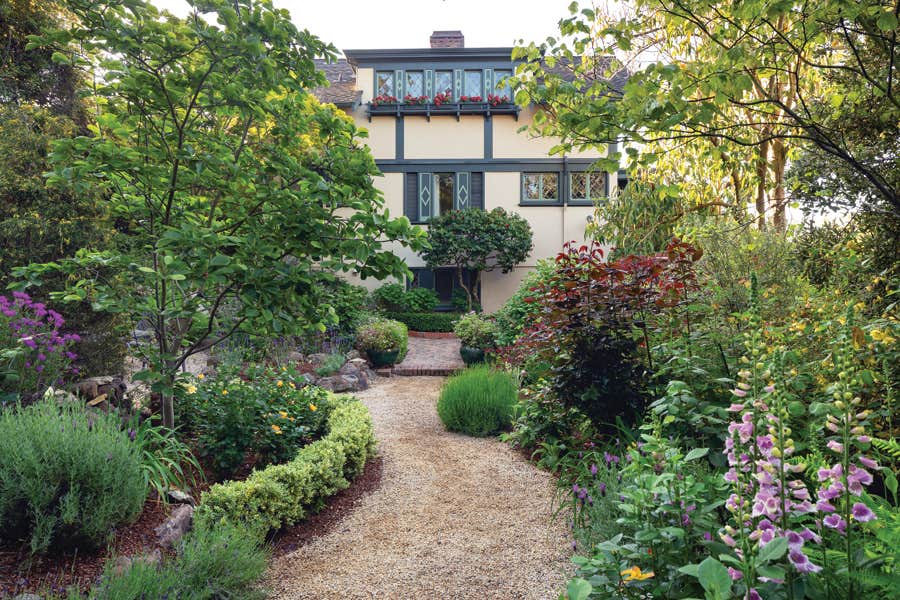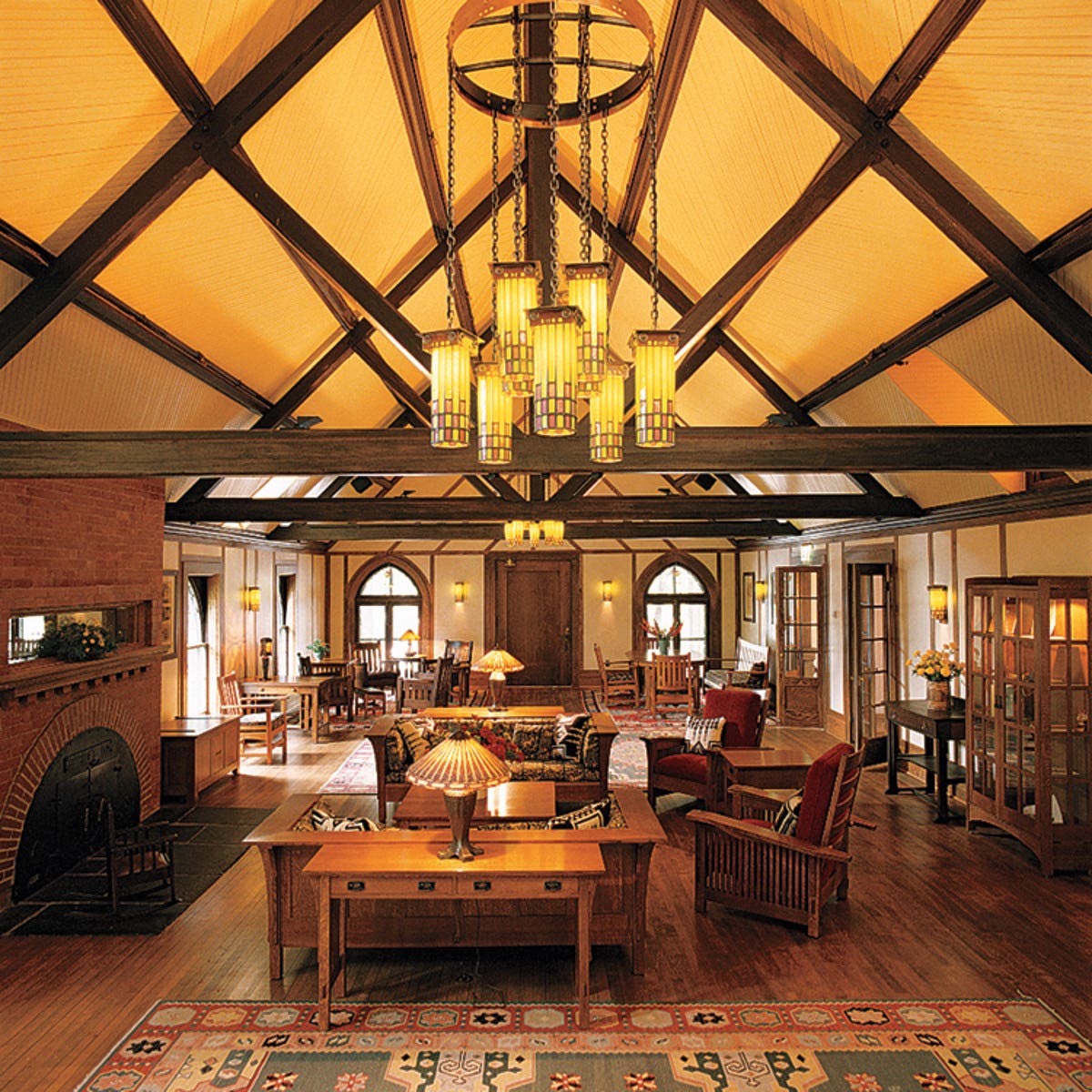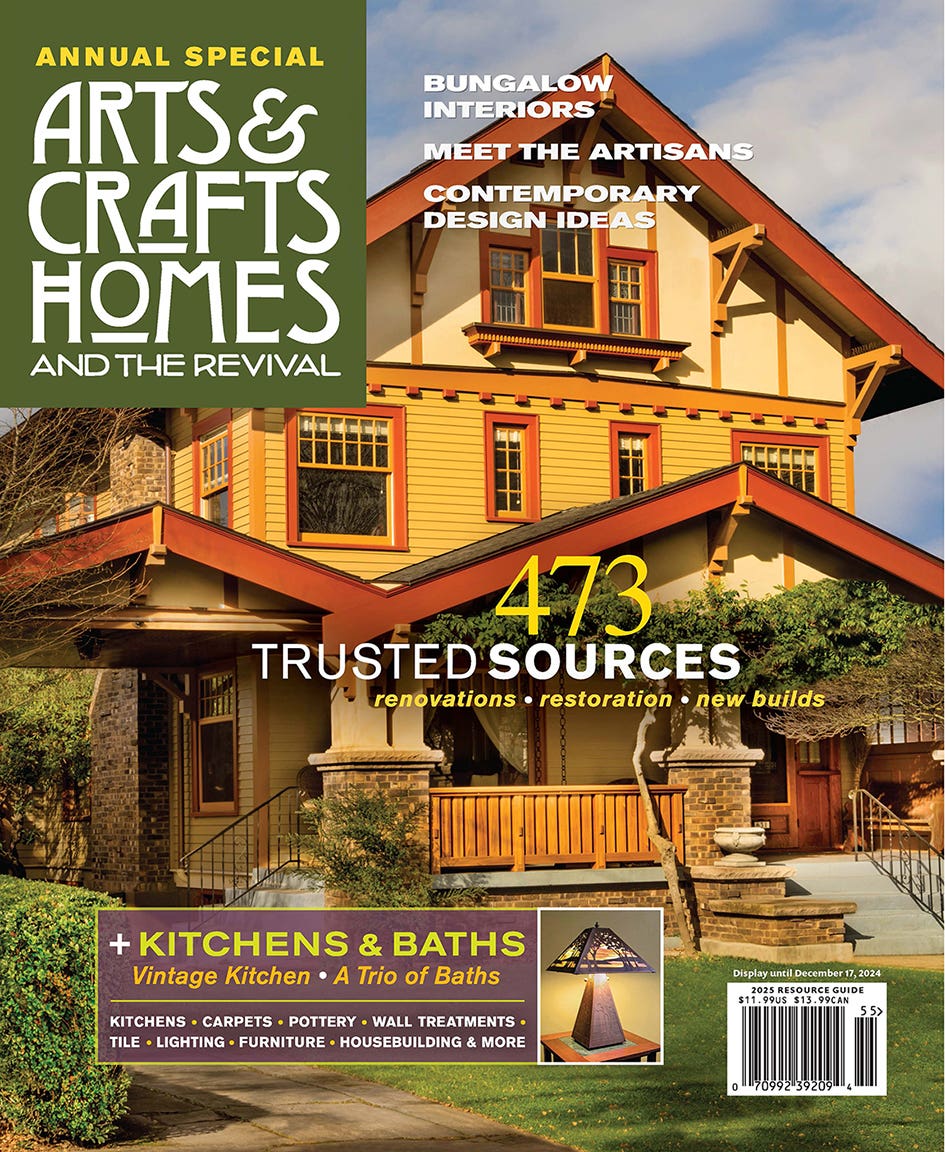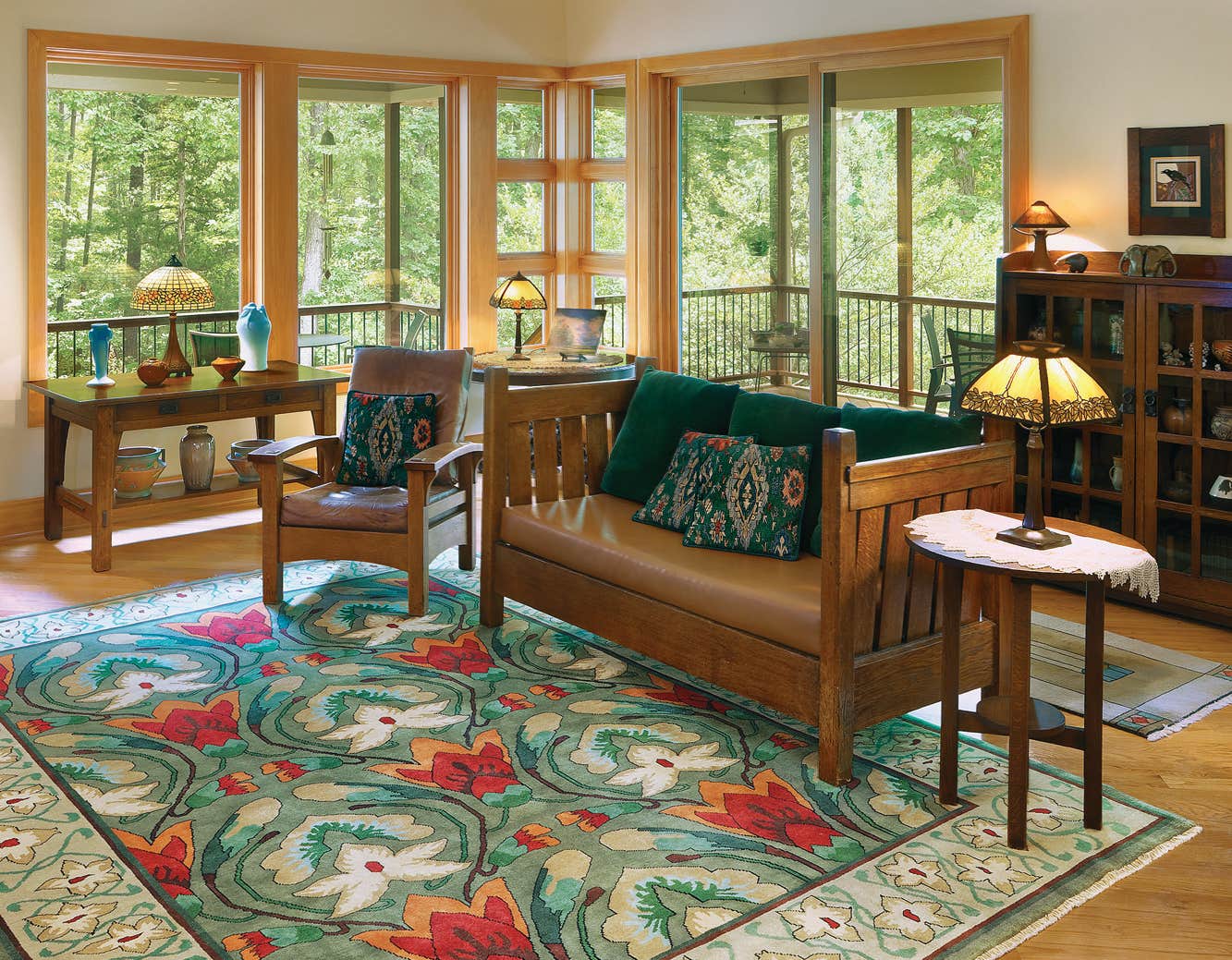Standen Still: English Arts & Crafts in Rural Virginia
The new country house is substantial and stately, yet intimate and warmly inviting.
In the fall of 1995, Joe Gale and Will Hopkins stood on a knoll in Rappahannock County, Virginia, taking in the panorama from land where they hoped to build a country retreat. The spot was secluded, surrounded by mature trees, and had stunning views of the Blue Ridge Mountains to the west. These were the critical elements in their search for a building site. This was to be the spot.
For several years, Gale and Hopkins had been looking, unsuccessfully, for an old house in the Virginia countryside. They had come to the conclusion that it would be best to buy land and then design and build a house to suit their needs.
On a trip to England in the spring of that year, Gale and Hopkins had toured several estates in the English countryside—most of which, according to Hopkins, were so grand that it didn’t seem possible to manage them without a staff of 20. Then they toured Standen, an Arts & Crafts country house with little pretension, the interiors of which were designed by William Morris. “We instantly fell in love with the house,” Gale remembers. Walking the grounds, they joked that, if they ever did build a country house, they would call it “Standen Still” in tribute.
Thus Standen and the English Arts & Crafts style inspired the house they would build. As soon as they had a contract on the land, Gale and Hopkins contacted Michael Holt, the architect who had worked with them during renovation of their city home—a 1909 Arts & Crafts house in Washington, D.C. Holt had updated the house without disturbing its period details, and he was the obvious choice to design the new country house.
Gale and Hopkins did their research, facilitating a remarkably smooth design process—which itself took about eight months—until the day they moved in. They broke ground in August of 1996, and the house was completed 16 months later. The finished house is stately, yet warmly inviting. Standen Still has 3,914 square feet of living space (plus 870 square feet unfinished and a 750-square-foot garage). Local contractor Lee Levick built the house; “the only interior designer was William Morris himself,” says Gale.
Hopkins affirms that the scale and interior of the house were “very much influenced by Standen.” The two started with a catalog of William Morris fabrics and wallpapers, then narrowed down choices to their favorites.
They chose paint colors for their compatibility with William Morris’s palette, giving attention to the flow from room to room. Hopkins recalls: “We went through over 100 quarts of paint in order to find exactly the right hues, painting large areas with samples to see how they looked next to the wallpapers and fabrics we intended to use.”
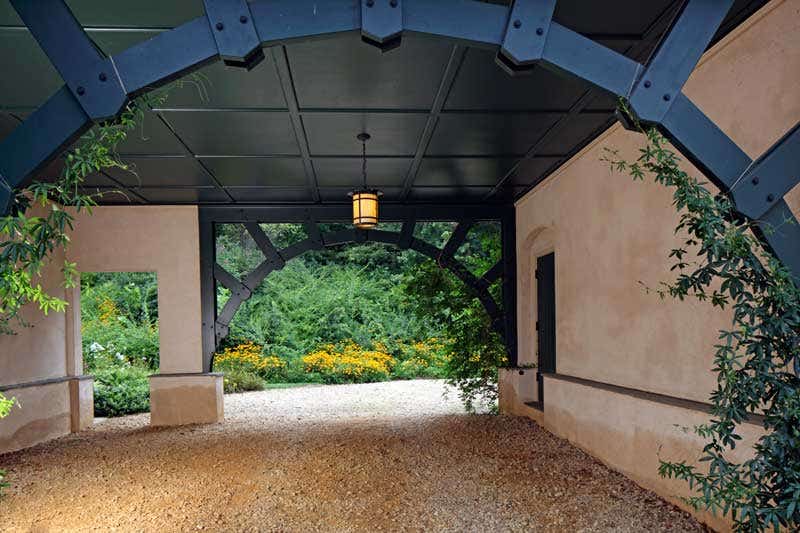
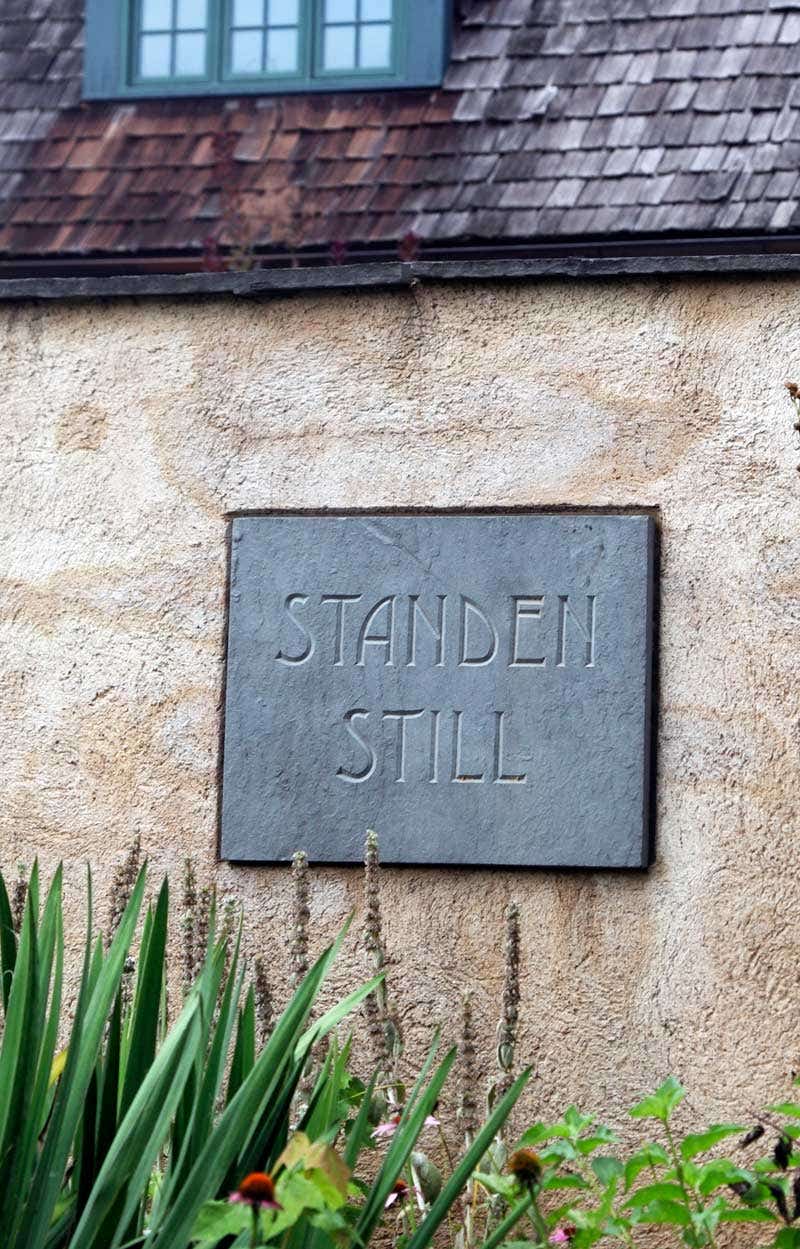
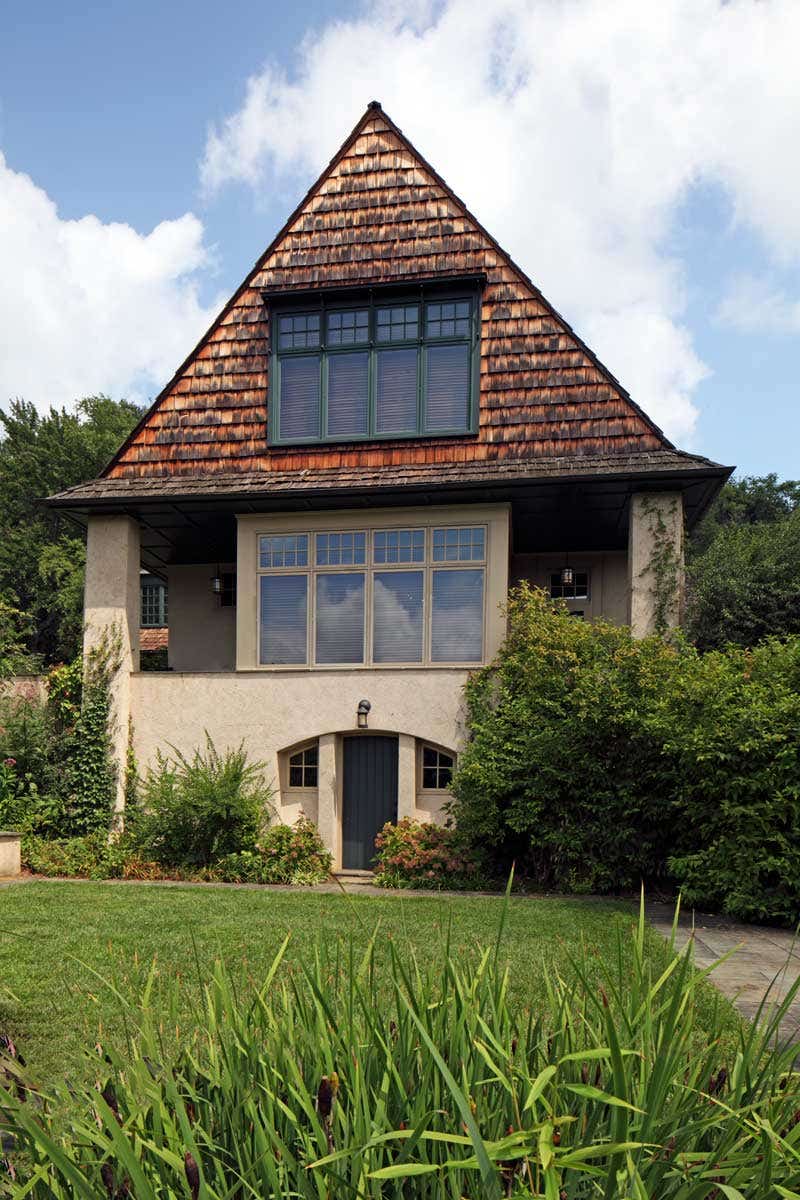
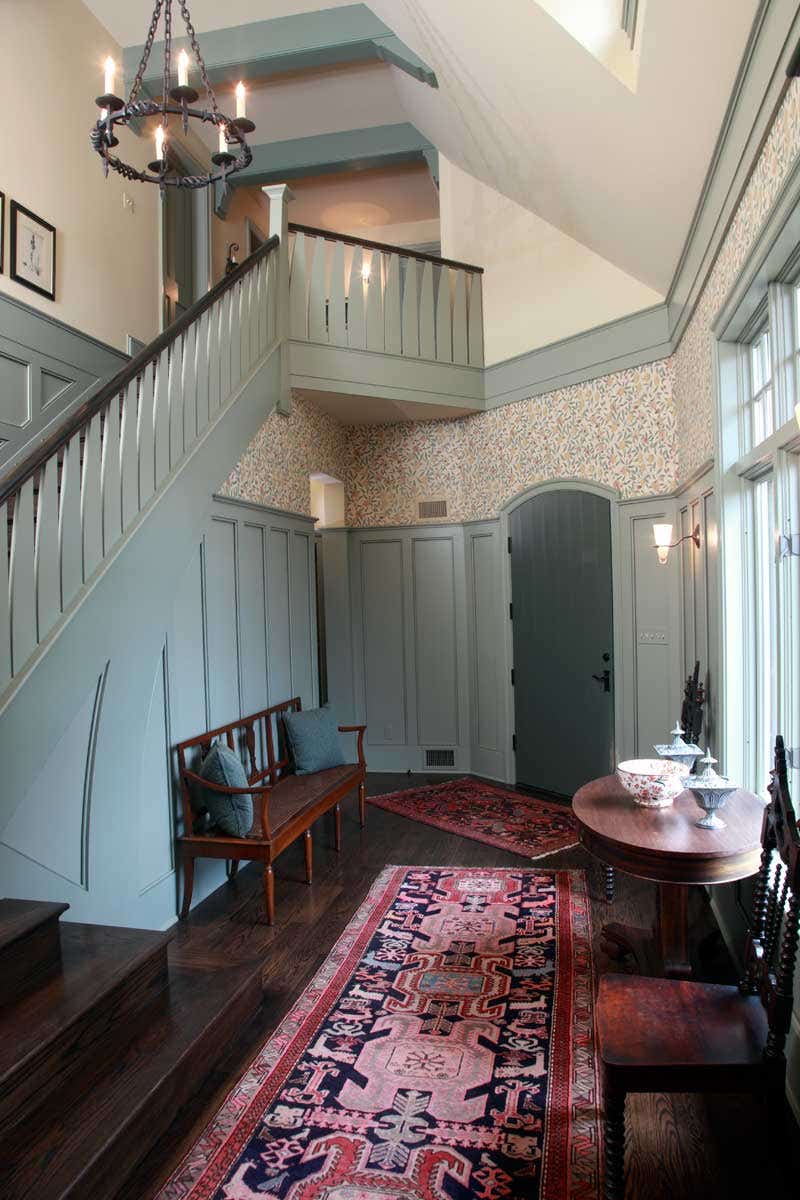
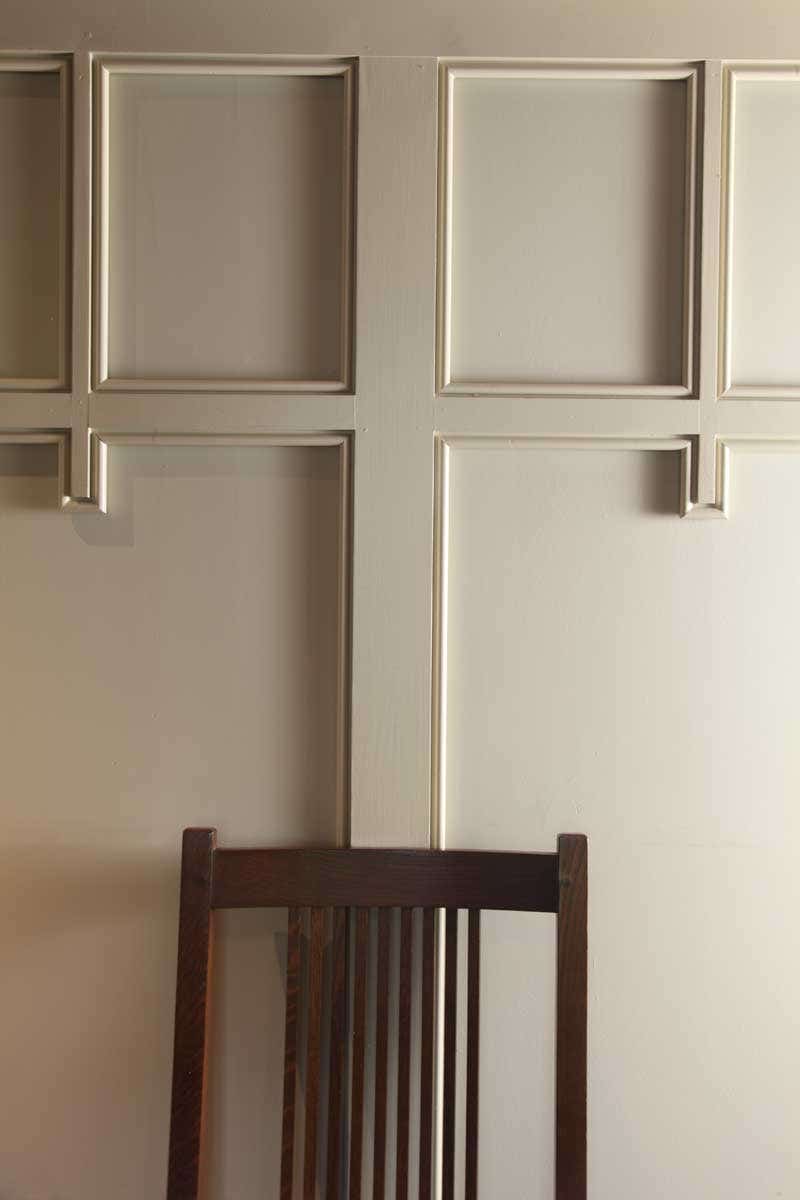
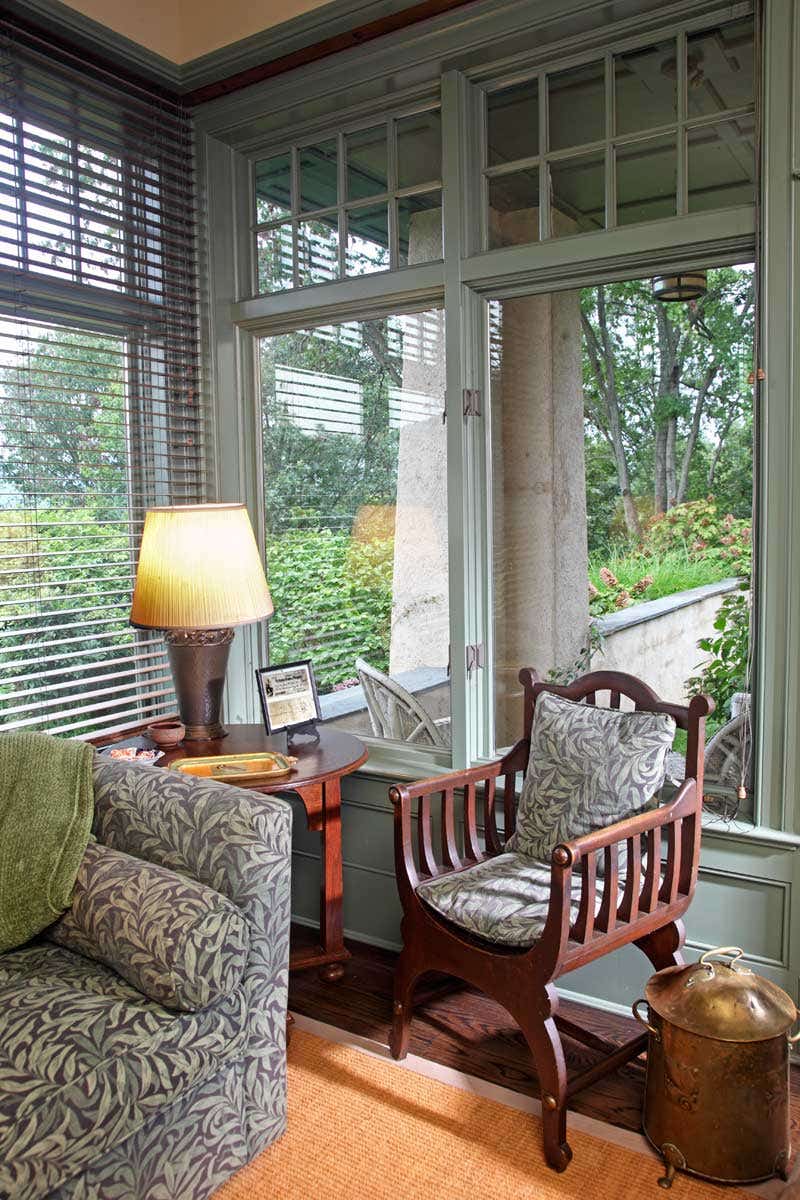
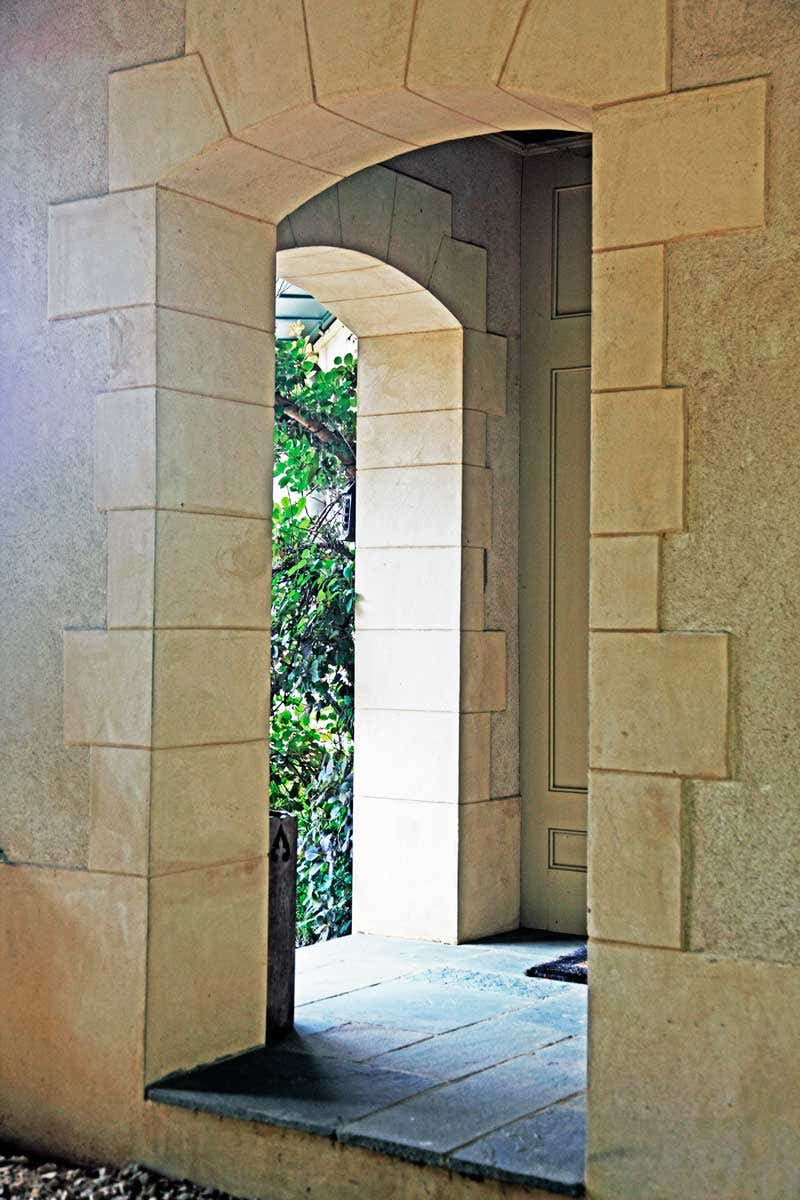
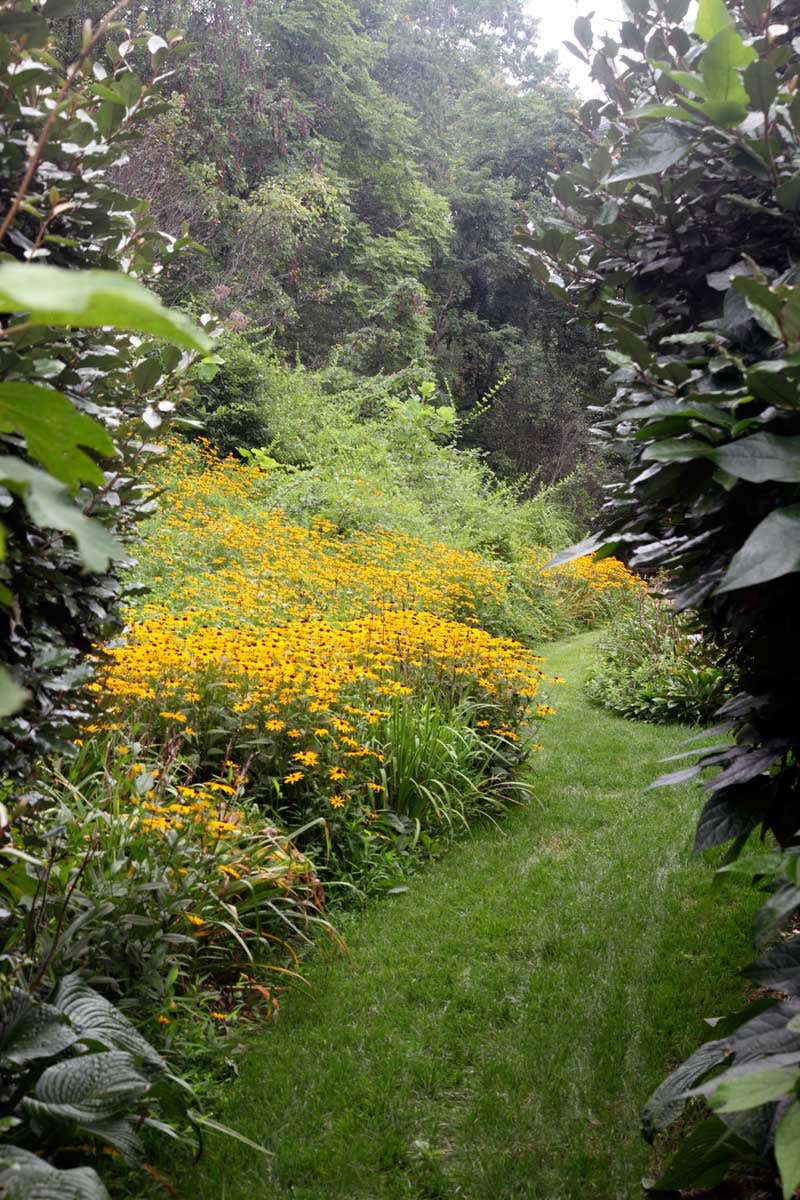

While the exterior of the house channels the English architect C.F.A. Voysey, its rooms are “pure Standen.” Small nooks for conversation in the great room give the house an intimate feeling, yet there is ample room to entertain a crowd. “We wanted the interiors to be elegant but still comfortable,” Gale says. From the stair hall entry and throughout every room of the house, they achieved exactly that.
During their 1995 trip to England, Hopkins and Gale bought many furnishings and shipped them back. Gale recalls that “at the time, the dollar/pound exchange rate was favorable—and the English market did not fully value Arts & Crafts as much back in 1995.” He explains that all changed in 1996, when the Victoria and Albert Museum staged a major William Morris exhibition commemorating the hundredth anniversary of his death.
In furnishing their country home, Hopkins says, “We also acquired pieces, both new and antique, from various venues in New York and Washington, D.C. And some things we transferred from our house in D.C.”
This house, to which the men retreat on weekends and whenever they can escape their city life, was created with passion, and with historical perspective but also with whimsy. Hopkins jokes that the name of the house, Standen Still, “has shades of meaning for us, playing on the similarities between the words ‘Standen’ and ‘standing’: notably, permanence, at rest … the bar is always open.”
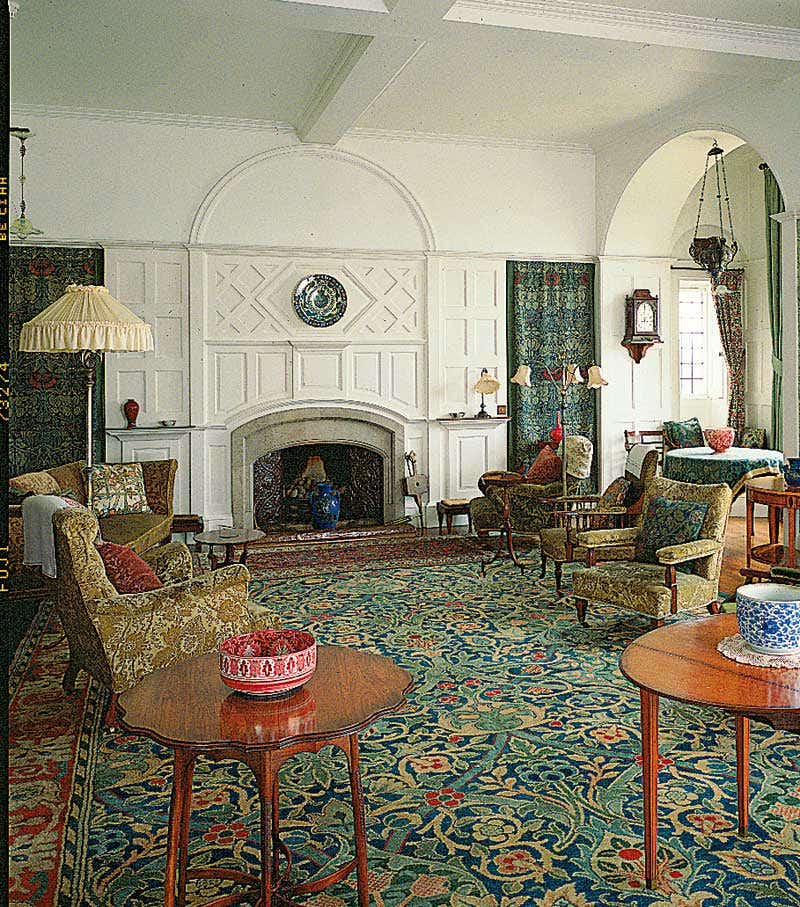
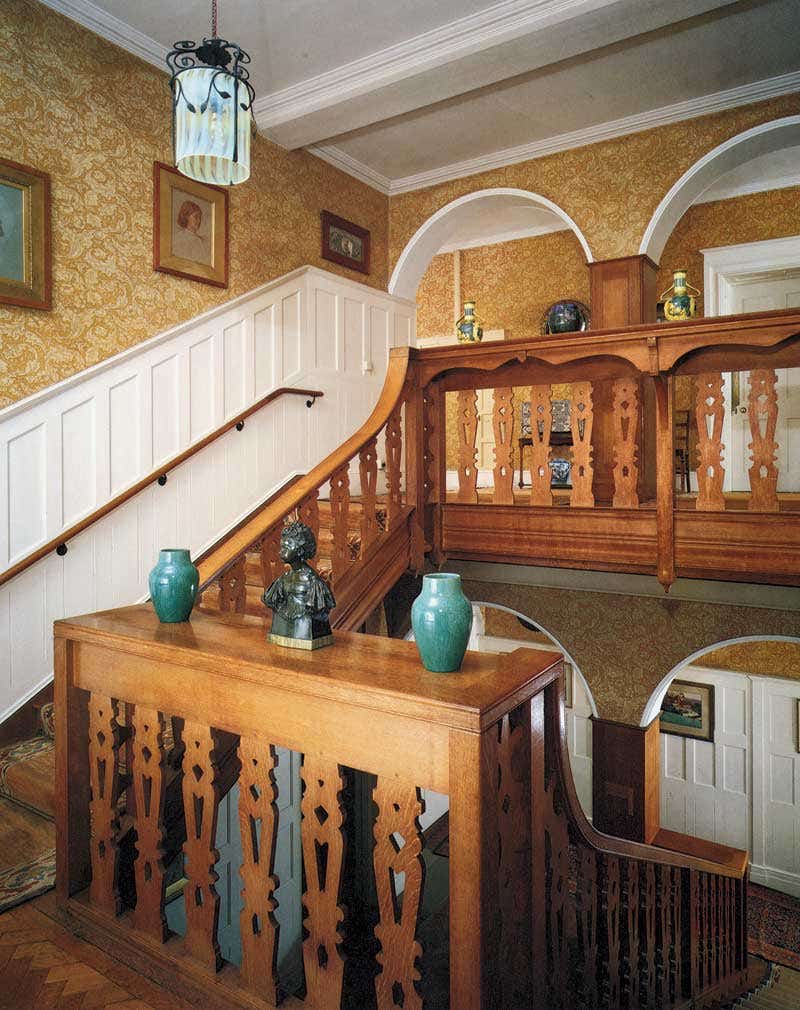

The original Standen
Standen is the architect Philip Webb’s “modest country house” built in the 1890s in West Sussex, England, and the inspiration for the new house in Virginia. Webb was a lifelong friend and collaborator of William Morris, the father of the British Arts & Crafts movement; the house is decorated with Morris carpets, fabrics, and wallpapers. Rooms inside are remarkably uncluttered for a house of the late Victorian period. The emphasis is on intimate conversation areas within generous rooms, and of course Morris’s patterns.
Standen was built for the solicitor James Beale and his wife, Margaret; the Beale family and Webb were careful about the siting of the house in its rolling landscape. Today both house and gardens are open for public tours. For further information, go to nationaltrust.org.uk/standen.
Arts & Crafts Homes and the Revival covers both the original movement and the ongoing revival, providing insight for restoration, kitchen renovation, updates, and new construction. Find sources for kitchen and bath, carpet, fine furniture and pottery, millwork, roofing, doors and windows, flooring, hardware and lighting. The Annual Resource Guide, with enhanced editorial chapters and beautiful photography, helps Arts & Crafts aficionados find the artisans and products to help them build, renovate, and decorate their bungalow, Craftsman, Prairie, Tudor Revival, or Arts & Crafts Revival home.




